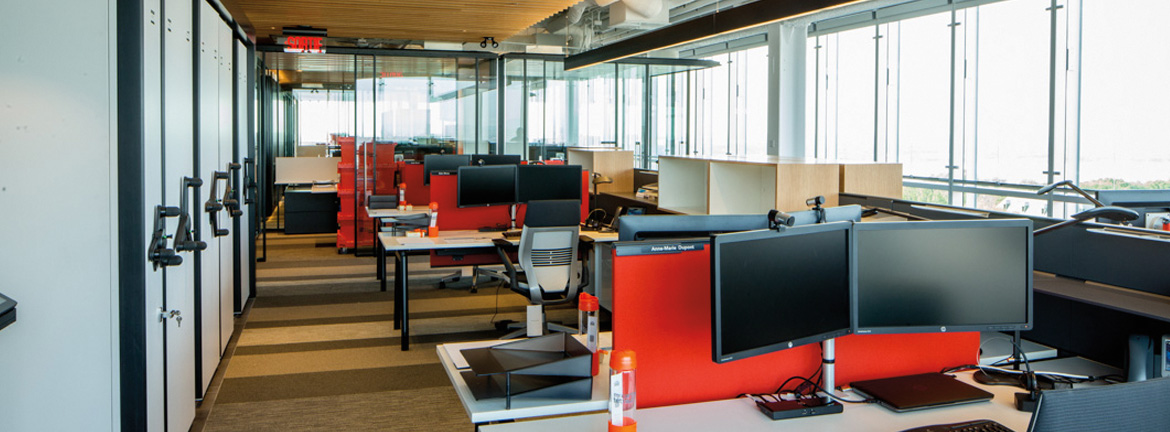The long-term impact of the global pandemic on the legal industry likely is going to be felt in numerous ripples, both big and small, across a wide spectrum of factors within the industry.
Real estate, for example, may see a dramatic impact — if early movement and solid survey results are any indication. As we discussed in the first part of this series, law firms are seeking to downsize their real estate footprint, spurred on by the global pandemic that forced the industry to rapidly adapt to remote working, technological innovation, and new employee desires for flexibility in their work life.
To be sure, the legal industry felt these pressures before the pandemic, especially the need for a deeper commitment to technology to promote better efficiency and effectiveness. However, the legal industry and its entrenched partnership model was able to put off these necessary changes even as warning bells rang. Now it seems, industry leaders are listening to those bells.
Yet, what does this mean in practice? How are law firms addressing their individual real estate situations in the face of changing workplace pressures? And what options will they most likely pursue? Simply put, will this be a pull-back in office space that evaporates once the good times start rolling, or will it be a dramatic re-thinking of what the law office of the future should look like, strongly influenced by the role technology and remote working will play in this re-design?
“We are seeing a fundamental shift and market correction in the legal sector in regard to real estate and office space. We were already seeing the sector begin to de-densify and right-size even before the pandemic.”
Sherry Cushman, Vice Chair and Executive Managing Director of Cushman & Wakefield, the global commercial real estate services firm, thinks it’s the latter, and she has the numbers to back up that position. Indeed, based on the data in Cushman & Wakefield’s recent annual “Global Office Impact Study” and several subsequent reports such as the firm’s “Bright Insight” legal sector benchmark survey, the overall global office sector is expected to see a 50% growth in vacancy worldwide by mid-2022, with the average law firm anticipating a 20% or more reduction in its real estate footprint.
“We are seeing a fundamental shift and market correction in the legal sector in regard to real estate and office space,” Cushman says, adding this shift is accelerating a downsizing trend that the legal industry has flirted with for the past decade. “We were already seeing the sector begin to de-densify and right-size even before the pandemic.”
In fact, pre-pandemic target ratios were coming in at around 600 square feet per attorney for the average law office — now it’s under 400, Cushman explains. “So, you can see if your competition has gone out there and right-sized to a per attorney ratio of 500 square feet, and your firm is still at 1,000, you have to ask, how is that impacting our profit margin?”
Changes in attitude
What has changed, in Cushman’s view, is how open-minded law firms have become to what would have been considered radical changes just a few years ago. These include such new workplace game-shifters as shared offices, office space hoteling, greatly expanded and permanent remote working, and of course, expanded use of technology. “The pandemic allowed the industry to beta-test ideas that were having difficulty getting traction in a relatively conservative industry — and it worked,” she says, adding that law firm leaders who had been frustrated by their desire to implement change are now excited. “Oddly, COVID-19 has completely supported a massive change in the industry, and I think it’s fantastic.”
One interesting possibility that some law firms are looking into is the creation of so-called attorney hubs, which offer concentrated work space, enabled by new technology, for numerous attorneys at different times. “Some firms are beta-testing hubs as small as 70-square-foot spaces,” Cushman describes. “They’re building out spec spaces on floors and rotating attorneys in and out, alternating practice groups that come in Tuesdays and Thursdays with those that come in Mondays and Wednesdays.”
The clear advantage to these hubs is that they really spur on the collaboration, mentoring, new technology, and other networking concepts that law firm leaders have wanted to implement but haven’t yet initiated. “So, it’s not about how many hours or days you’re in the office, it’s actually about when you’re in the office and that you’re getting all of those things that you need,” she adds. “It’s just rethinking, re-evaluating, and making the office quite frankly, more important than it’s ever been.”
For example, Cushman says she worked with one client — an AmLaw 100 law firm based in Chicago — for the past few years, simply tracking the firm’s office lease expirations and not making any big changes. Then, the pandemic hit, and the law firm was eager to reduce its real estate costs. Cushman says they looked at all 12 of the firm’s offices, drilling down into every market. What markets had vacancy rates that were rising? What markets had lots and lots of sublet space? What market’s rents were being driven down and concessions driven up?

Then, her team drilled down into each building situation. Who owns it? Is it a real estate investment trust, a pension fund, a foreign investor, a local owner? What is their appetite for risk? Then, they examined the debt, the equity, the tenant vacancy rate, and pending vacancy rates of the buildings. “So, all of a sudden, deals that we didn’t have a year ago are presenting themselves,” Cushman says, adding that landlords were starting to realize that there was going to be a lot of downsizing and a lot of people maybe even closing their offices completely. This realization, and the background work to uncover and leverage it, allowed Cushman & Wakefield to reconfigure this client’s overall approach to its real estate footprint.
“The pandemic presented, in a positive way, many opportunities that that were not available because they were just being driven by lease expirations and landlords that weren’t willing to talk to us,” she says, noting that with this particular client, her team is doing deals on five of the law firm’s 12 offices. “If COVID hadn’t happened, we wouldn’t have these opportunities.”
Beyond this one example, Cushman says many law firms are making long-term, permanent real estate decisions. “Many firms are pushing the envelope really far,” she explains. “We’re going to see some really neat stuff coming out of the legal sector in regard to office space in the next couple of years that we’ve never seen before.”
In the final blog post in this series, we will look at how a reconsideration of staffing and technology is going hand-in-hand with these real estate entrenchments, and how trends toward remote working and tech innovation will heavily influence real estate decisions.






